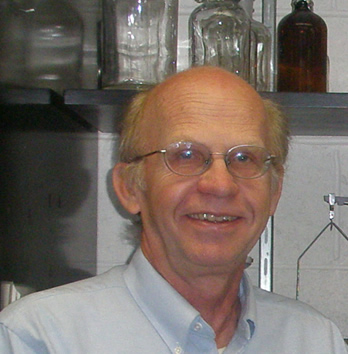| |
| |
| John R. Clay, Ph.D., Senior Investigator |
 |
Dr. Clay received a B.S. in Engineering Physics from Cornell University and a Ph.D. in Physics from the University of Rochester, Rochester, NY. He carried out postdoctoral work with Walter Freeman at the University of California, Berkeley, where he studied signal transduction in the olfactory cortex. He subsequently worked in the laboratory of Robert DeHaan and Lou DeFelice at Emory University in Atlanta, where he investigated ion currents underlying developmental changes in pacemaker activity in chick embryonic heart cells. His laboratory is currently investigating ionic current mechanisms which underlie neuronal bistability.
|

|
Research Interests:
The primary interest of this lab is the switching behavior between disparate neuronal states such as the sudden onset of epileptic seizures and sporadic apnea in newborn infants, especially preterm infants. In the latter example the infant suddenly stops breathing for reasons which are not fully understood. Usually the infant spontaneously switches back to normal breathing within several seconds for reasons which are also not understood, although the apnea can be prolonged and life threatening. The central neural oscillator which controls breathing appears to have two stable states in preterm infants, one in which normal breathing occurs and one in which the oscillator is quiescent. Low level stimuli, such as electrical noise, may be the trigger which produces switching between the two stable states. We have been using single cell preparations, especially squid giant axons, to examine this behavior and other behaviors of more complicated systems. A recent finding of this work concerns the optimal stimulus required to stimulate a neuron. Rectangular current pulses are usually thought to be optimal even though they do not occur in nature. We have found that sinusoidal waveforms have greater optimality since they stimulate a neuron with less current than used in pulses. These results may have relevance to the treatment of Parkinson's disease with electrical current pulses administered by means of implantable electrodes in the vicinity of the sub-thamlamic nucleus and the globus pallidus.
|
Selected Recent Publications:
Clay, J.R., Pardarfar, D., & Forger, D.B. (2008) A simple modification of the Hodgkin and Huxley equations explains type 3 excitability in squid giant axons., J. Royal Society Interface 5, 1421-1428.
Paydarfar, D., Forger, D.B., & Clay, J.R. (2006) Noisy inputs and the induction of on-off switching behavior in a neuronal pacemaker, J. Neurophysiology 96, 3338-3348.
Clay, J.R. (2005) Axonal excitability revisited, Prog. Biophys. & Mol. Biology 88, 59-90.
Clay, J.R. (2003) On the persistent sodium ion current in squid giant axons, J. Neurophysiology 89, 640-644.
Clay, J.R (2003) A novel mechanism for irregular firing of a neuron in response to periodic stimulation: Irregularity in the absence of noise, . J. Computational Neurosci 15, 43-51.
Clay, J.R. and Shrier, A. (2002) Temperature dependence of bistability in squid giant axons with alkaline intracellular pH, J. Membrane Biology 187, 213-233.
All Selected Publications
Contact Information:
Dr. John R. Clay
Ion Channel Biophysics Unit
Laboratory of Neurophysiology, NINDS
5625 Fishers Lane, Room TN-41, MSC 9404
Bethesda, MD 20892-9404
Telephone: (301) 496-7711 (office),
(301) 496-7711 (laboratory),
(301) 496-1565 (fax)
Email: Clayj@mail.nih.gov
|
|















